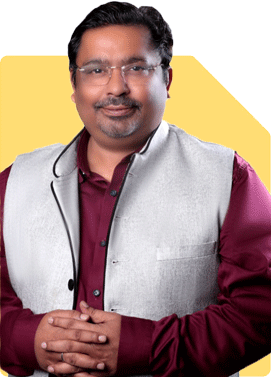Omkeshwar Singh | Answer |Ask -Follow
Head, Rank MF - Answered on Apr 05, 2022

I am 49 years old and Govt. service holder. I am currently investing in the following funds through SIP and lump sum for last 4 years. Please review my portfolio and suggest if I should continue or change?
1. Sundaram Large and Midcap Fund - Rs. 1500/- SIP
2. Aditya Birla Sun Life Focused Equity Fund - Rs. 1500/- SIP
3. Axis Mid Cap Fund - Rs. 1500/- SIP
4. SBI Flexi Cap Fund - Rs. 1500/- SIP
5. Nippon India Small Cap Fund - Rs. 50,000/- Lump sum (in 2018)
6. Tata Digital India Fund - Rs. 50,000/- Lump sum (in 2019)
7. Axis Small Cap Fund - Rs. 1,00,000/- Lump sum (in 2020)
8. DSP Small Cap Fund - Rs. 50,000/- Lump sum (in 2020)
9. DSP Natural Resources and New Energy Fund- Rs. 1,00,000/- Lump sum (in 2019)
You may like to see similar questions and answers below
Omkeshwar Singh | Answer |Ask -Follow
Head, Rank MF - Answered on Jun 10, 2022
Omkeshwar Singh | Answer |Ask -Follow
Head, Rank MF - Answered on Sep 09, 2020
Nikunj Saraf | Answer |Ask -Follow
Mutual Funds Expert - Answered on Nov 14, 2022
Ramalingam Kalirajan |10881 Answers |Ask -Follow
Mutual Funds, Financial Planning Expert - Answered on May 28, 2024
Dr Dipankar Dutta |1841 Answers |Ask -Follow
Tech Careers and Skill Development Expert - Answered on Dec 14, 2025
Nayagam P P |10854 Answers |Ask -Follow
Career Counsellor - Answered on Dec 14, 2025
Radheshyam Zanwar |6744 Answers |Ask -Follow
MHT-CET, IIT-JEE, NEET-UG Expert - Answered on Dec 14, 2025
Radheshyam Zanwar |6744 Answers |Ask -Follow
MHT-CET, IIT-JEE, NEET-UG Expert - Answered on Dec 14, 2025
Dr Dipankar Dutta |1841 Answers |Ask -Follow
Tech Careers and Skill Development Expert - Answered on Dec 14, 2025
Dr Dipankar Dutta |1841 Answers |Ask -Follow
Tech Careers and Skill Development Expert - Answered on Dec 13, 2025
Dr Dipankar Dutta |1841 Answers |Ask -Follow
Tech Careers and Skill Development Expert - Answered on Dec 13, 2025
Mayank Chandel |2575 Answers |Ask -Follow
IIT-JEE, NEET-UG, SAT, CLAT, CA, CS Exam Expert - Answered on Dec 13, 2025
Radheshyam Zanwar |6744 Answers |Ask -Follow
MHT-CET, IIT-JEE, NEET-UG Expert - Answered on Dec 13, 2025
Mayank Chandel |2575 Answers |Ask -Follow
IIT-JEE, NEET-UG, SAT, CLAT, CA, CS Exam Expert - Answered on Dec 13, 2025
























